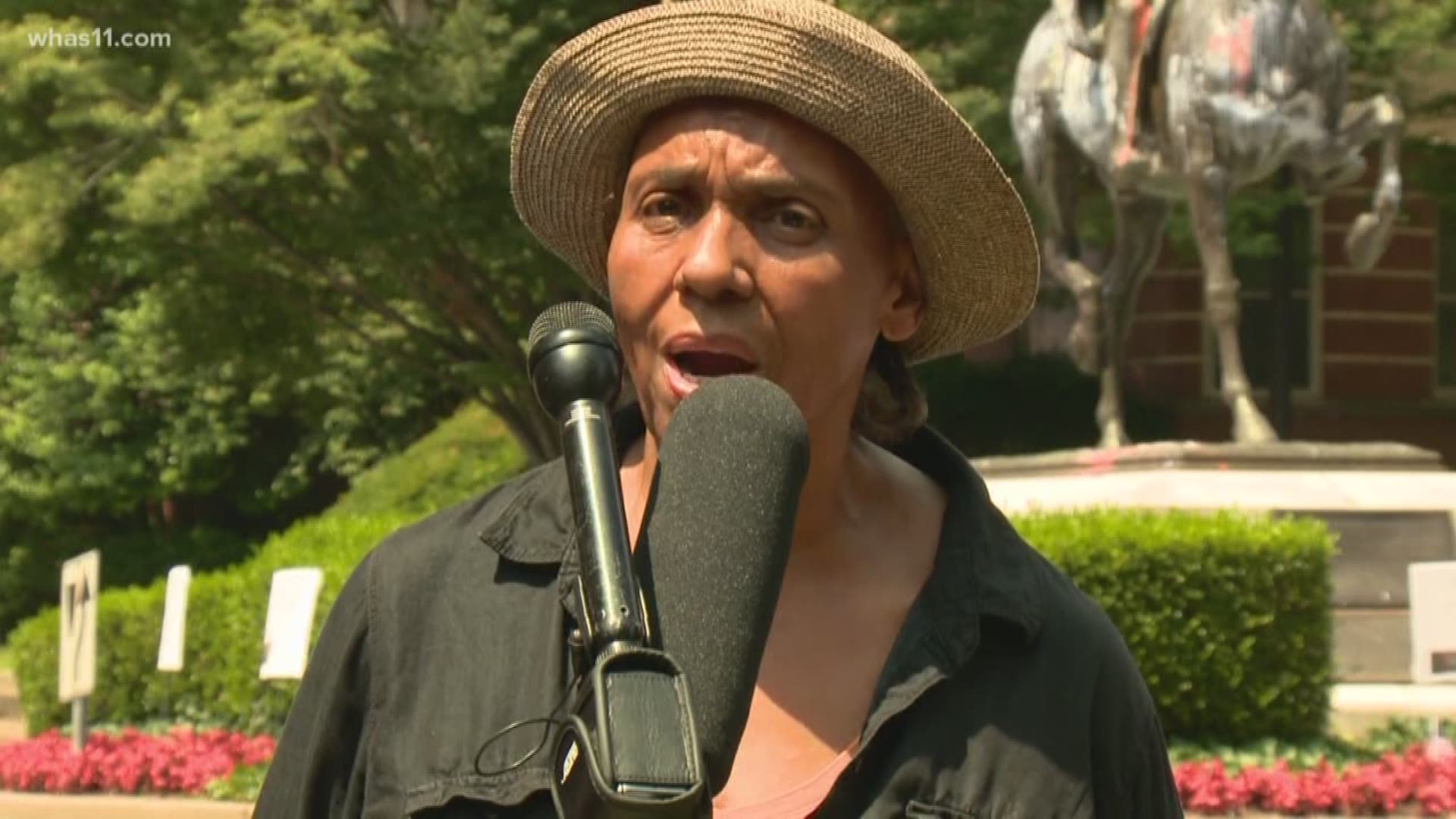LOUISVILLE, Ky. — Friends of Louisville Public Art has called on the community to learn the true history of John B. Castleman after the recent controversy surrounding the statue that sits in Cherokee Triangle. A spokesperson for the group, Steve Wiser, said they are dedicated to protecting and accurately portraying the city's public art.
The Castleman statue has been vandalized multiple times and has been the center of debate over whether or not to move it from public view due to his involvement in the Confederacy.
The group urged the community to learn more about Castleman's history and his efforts to help the African American community in Louisville.
“They praised Castleman for his efforts to keep the parks integrated while he was alive," Wiser said.
Martina Kunnecke, a historian and former Director of Exhibits and Collections at the Kentucky Center for African American Heritage, finds the controversy around the Castleman Statue troubling.
“It is always troubling when history is cleaned up, dirtied up, fashioned to fit a political purpose, which we feel in the case of the Castleman statue, that is what has happened," Kunnecke said.
She believes the history has been twisted to distract from serious problems in the community.
“We live in a community where many children, for decades, have been ill served by a school system, turned out onto the streets where they cannot find good paying jobs, a good position, buy a home, and we wonder why we have shootings in this city every night.”
During the press conference held by the group on July second, Waymen Eddings read multiple quotes from prominent African Americans who spoke highly of Castleman during his time.
“Whenever . . . injustice or proscription raised its hand against African Americans, Gen. Castleman’s voice was heard pleading for toleration and amicable adjustment.” J. Raymond Harris, African American educator, May 24, 1918
“. . . no hero on the other side ever held so high a niche in the hearts and minds of African American Kentuckians. . . . His kindness, his willingness to help with counsel and advice, were unstudied and uncalculated.” J. Raymond Harris, African American educator, May 24, 1918
“ . . . to African Americans . . . his passing . . . is a calamity. . . . May we hope the profound . . grief of African Americans in Louisville . . may lessen the burden of sorrow which weighs upon the hearts of those dear to him, as well as be a testimonial of appreciation about which the evergreens of memory shall always clings.” J. Raymond Harris, African American educator, May 24, 1918
“. . . Gen. Castleman . . .steadfastly refused to allow any kind of racial segregation in the parks of the city . . . African Americans have used all parks of the city . . . without . . hindrance through all these years and with little or no trouble of any kind.” Letter to the Courier Journal, July 4, 1924, by 19 prominent African American leaders of Louisville
A quote from Castleman himself was also read.
" . . I will at any time salute an officer . . who salutes me, without regard to the color of his skin. . . I want to urge every soldier to be a soldier in the full sense of the term. We are at war, and soldiers are under the rules of the American army. We are all one under one flag.” Castleman on saluting African American officers during World War I
“When I look at the Castleman statue, I see a piece of art, but I also see a piece of history that hearkens back to men and women who helped to found this community from many different origins. Whether they served with the Union or served with the Confederacy, the great story about American and about Louisville is that in the end we all came back together and we’re all a part of the foundations that continue to serve this community," Eddings said.
Friends of Louisville Public Art has increased their reward in the search for those who vandalized the Castleman statue and Muhammad Ali mural. It has increased from $1,000 to $2,000 for information that leads to an arrest in the vandalism of either piece of public art.
►Make it easy to keep up-to-date with more stories like this. Download the WHAS11 News app now. For Apple or Android users.
Have a news tip? Email assign@whas11.com, visit our Facebook page or Twitter feed.

